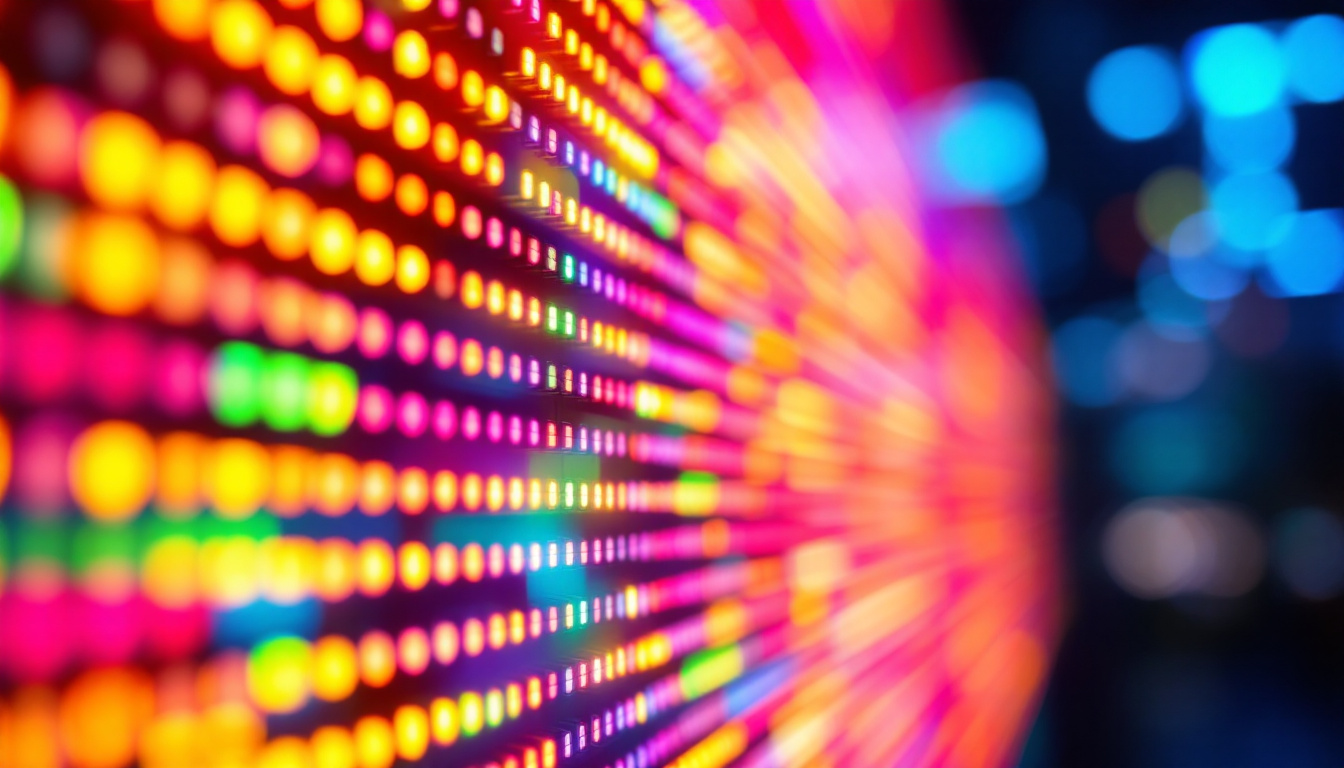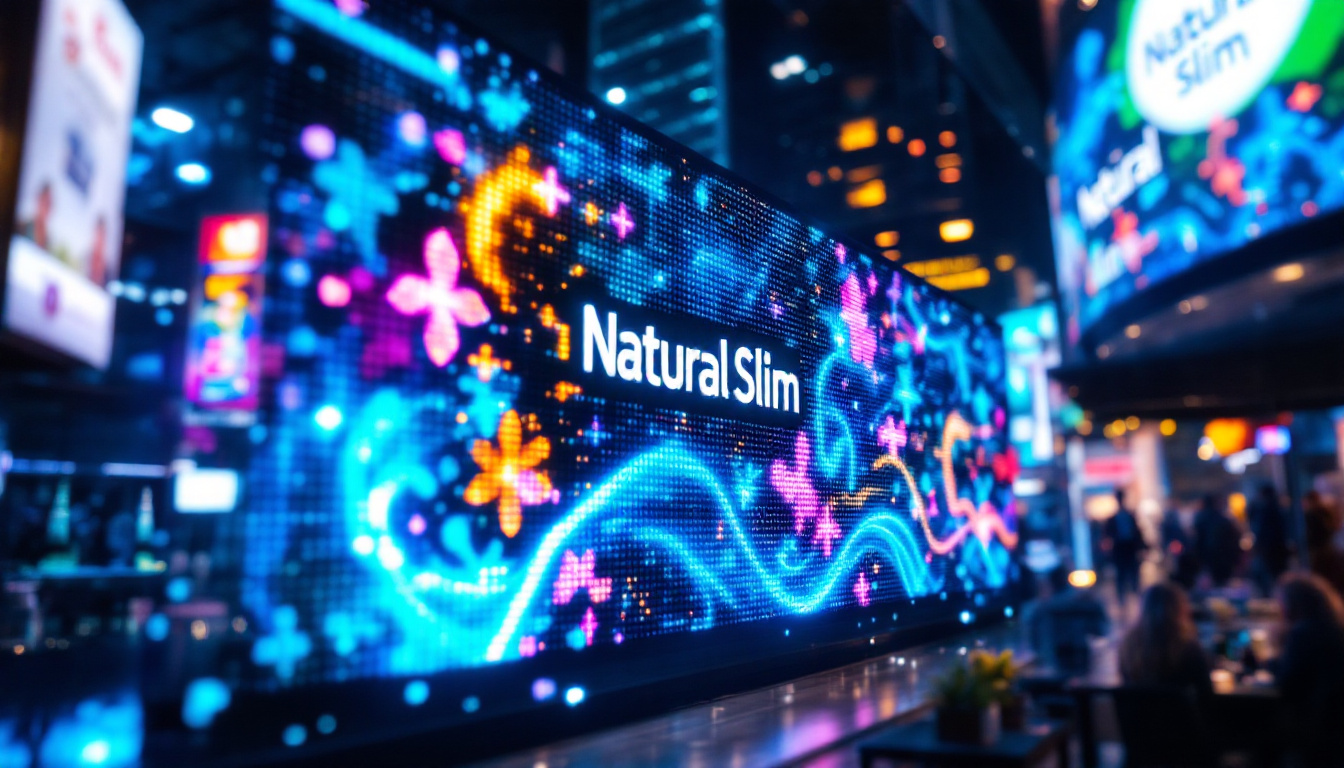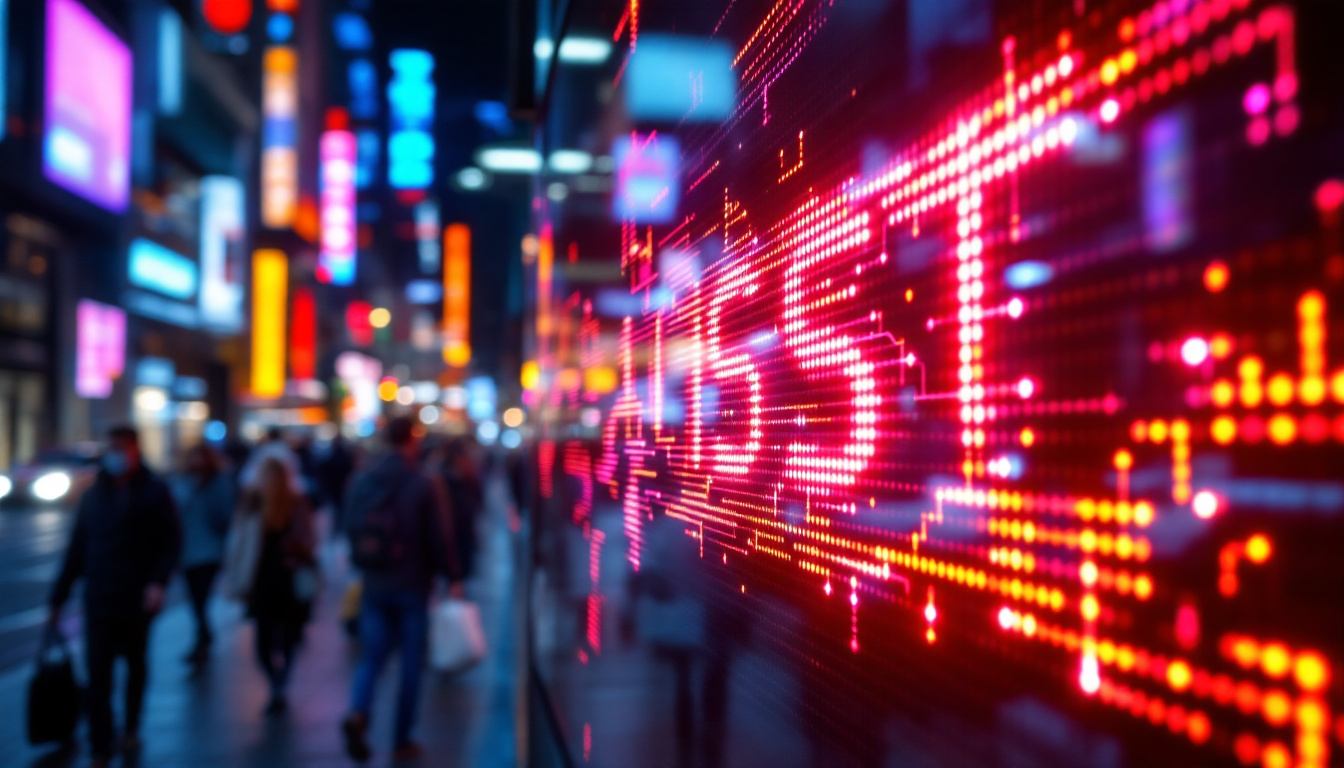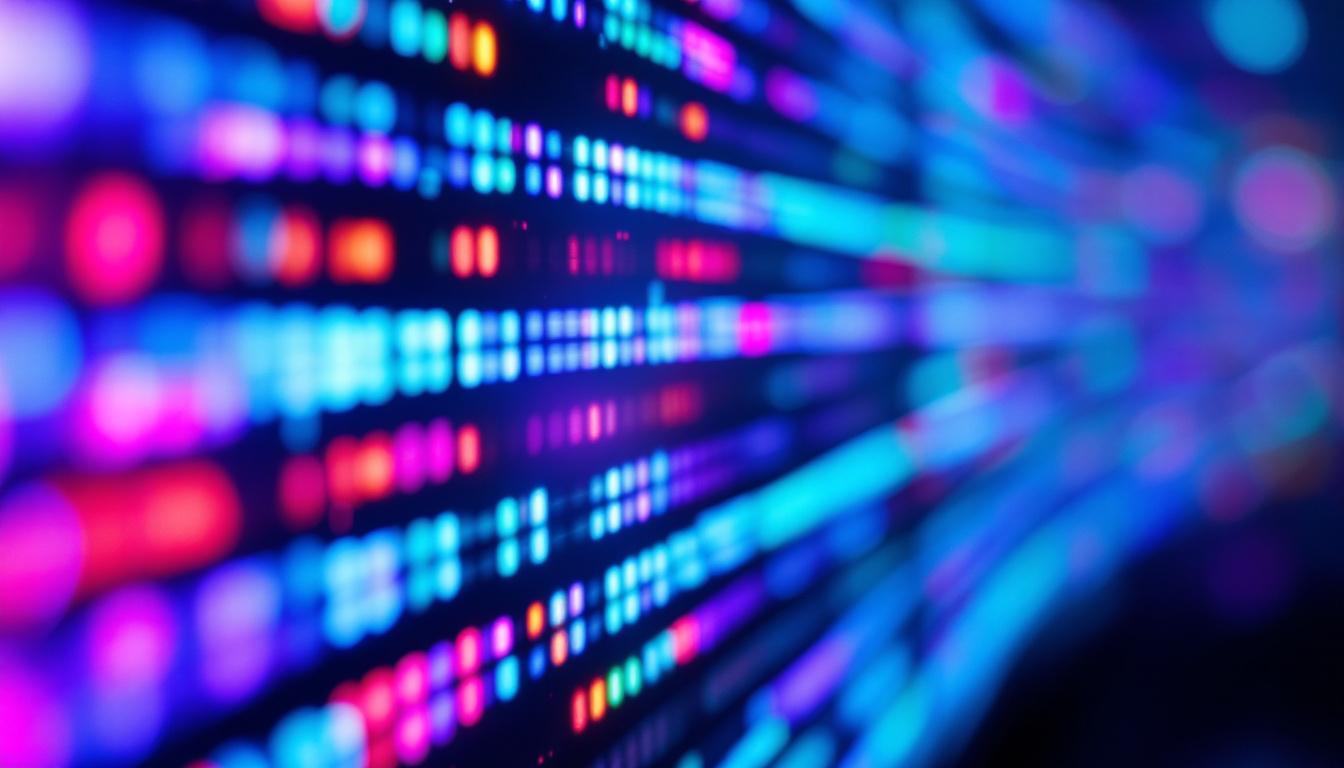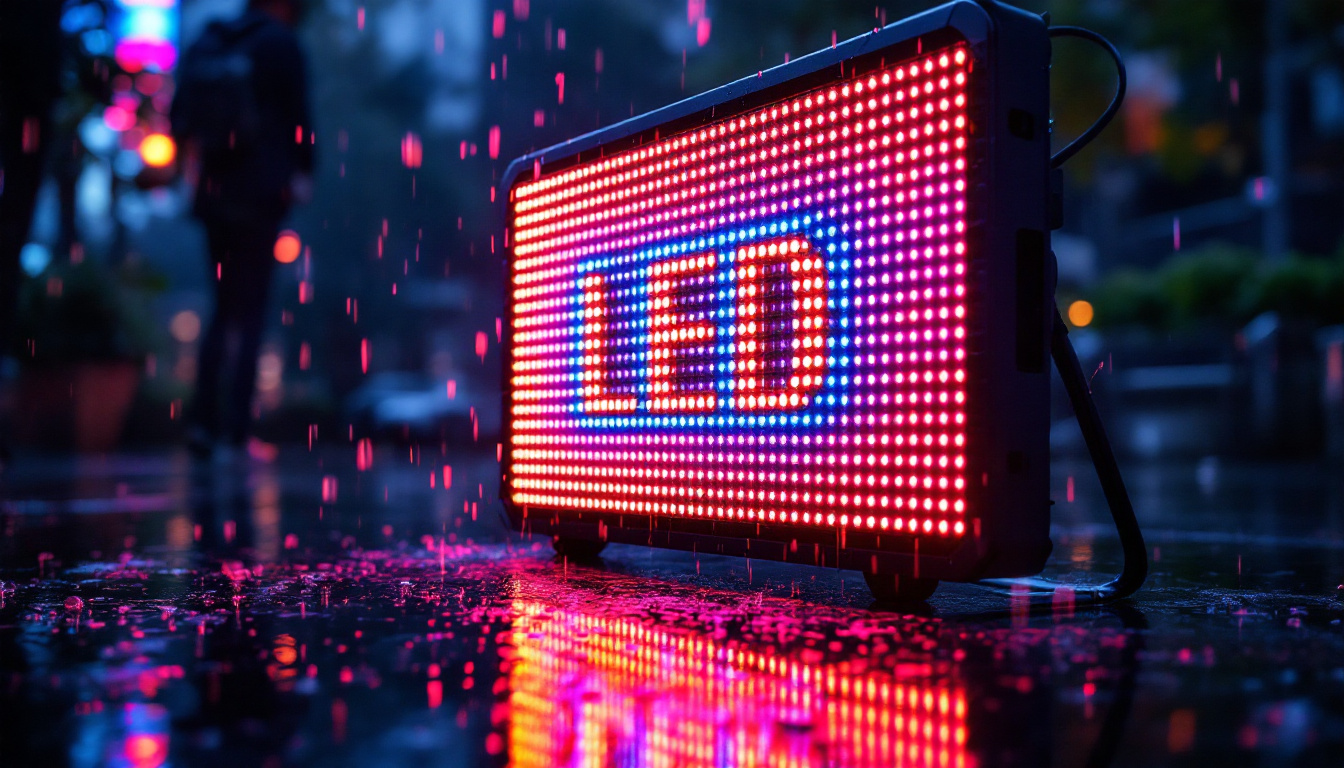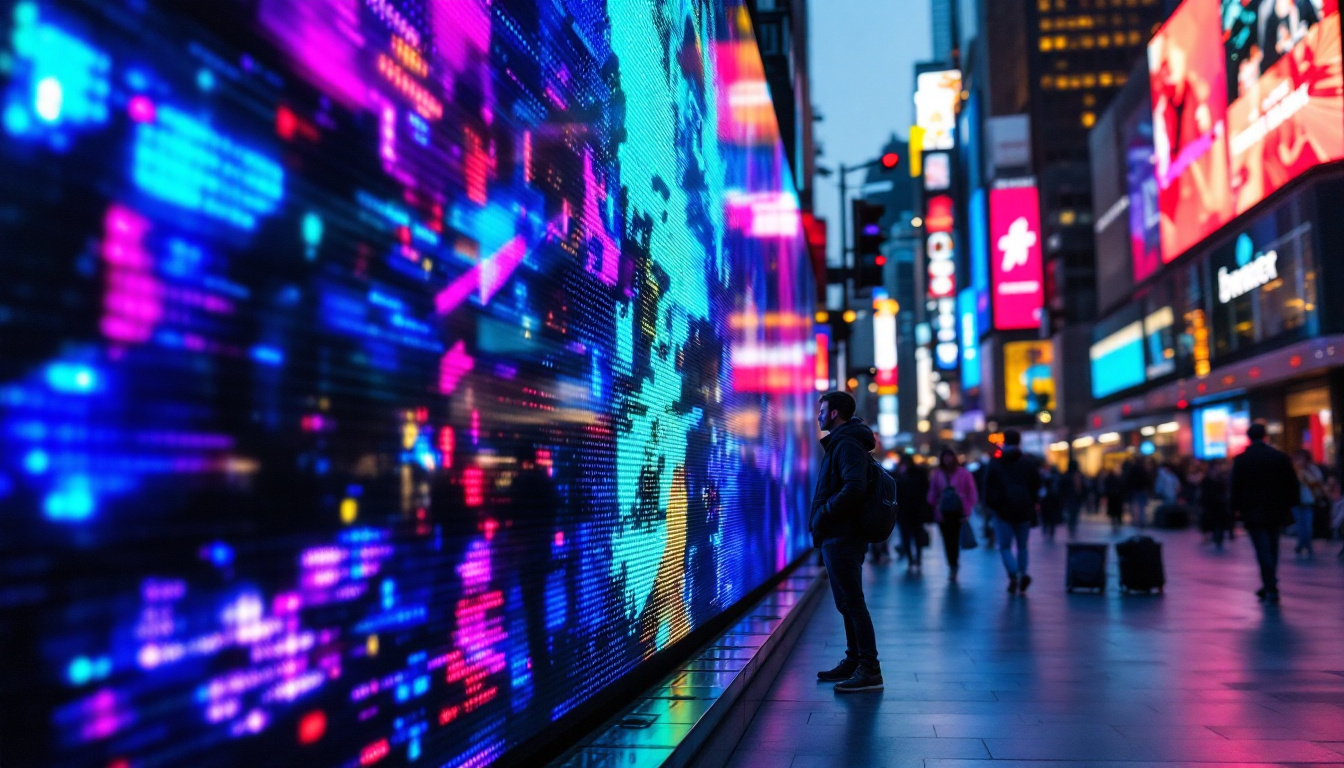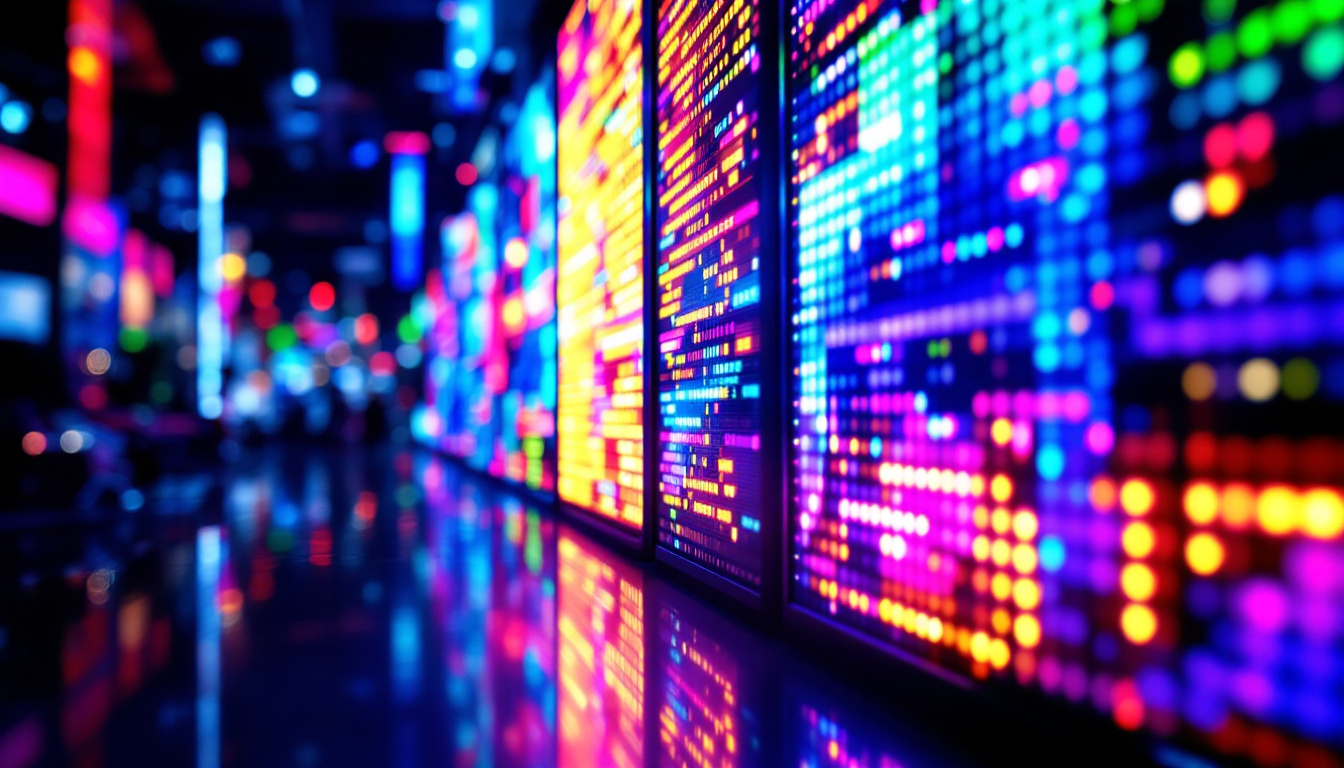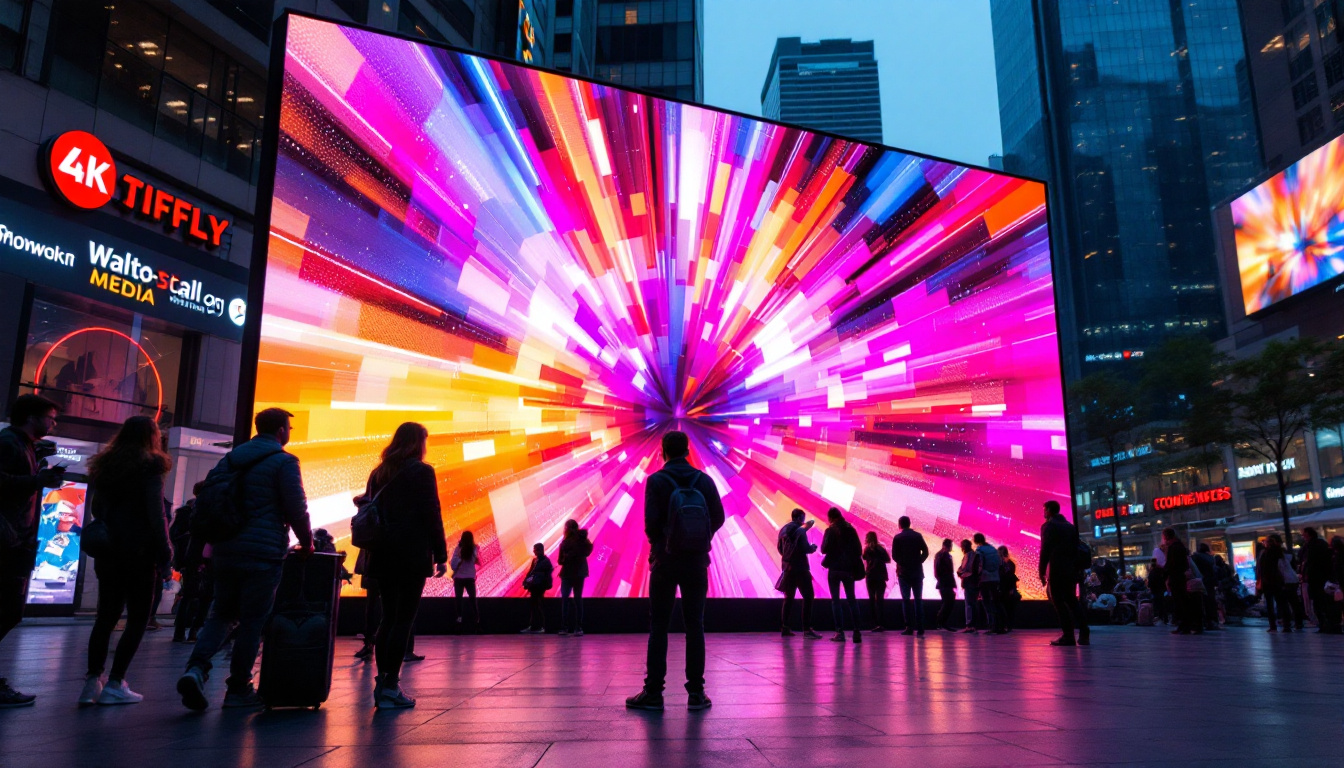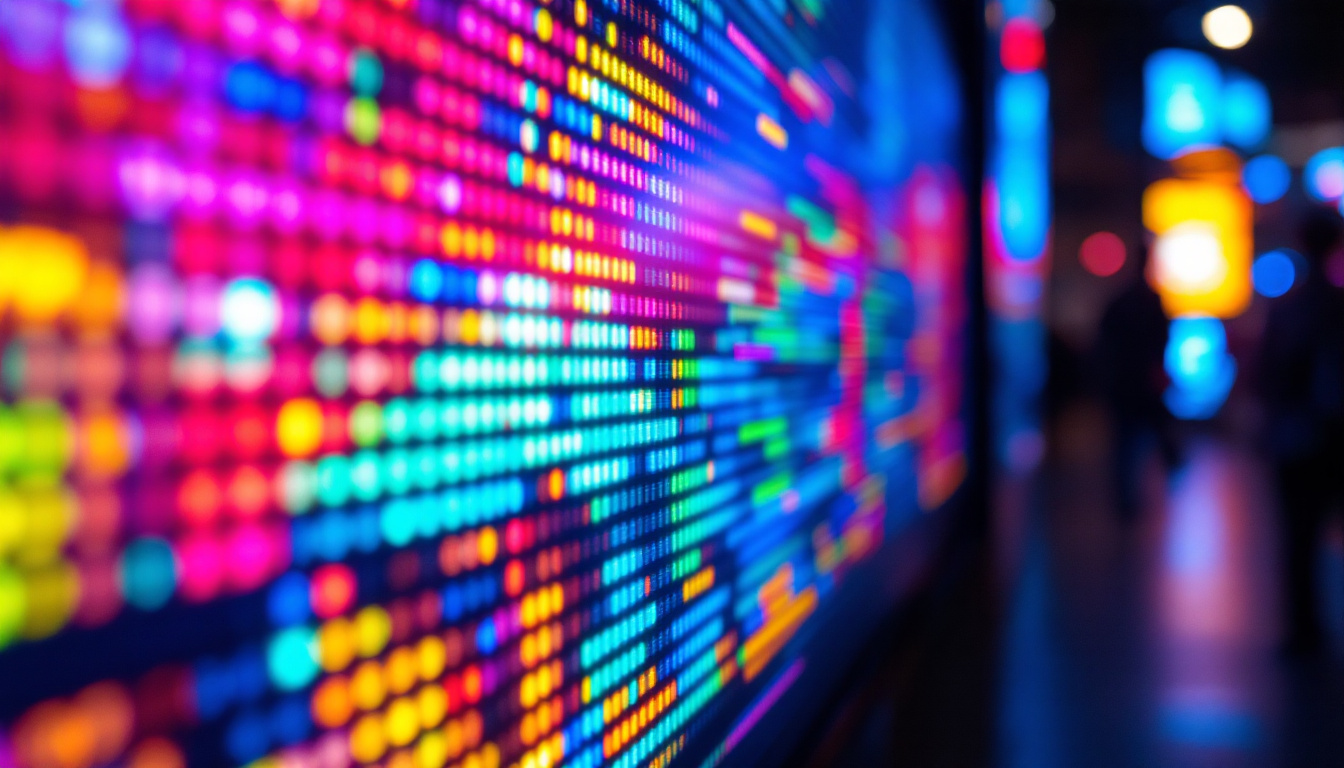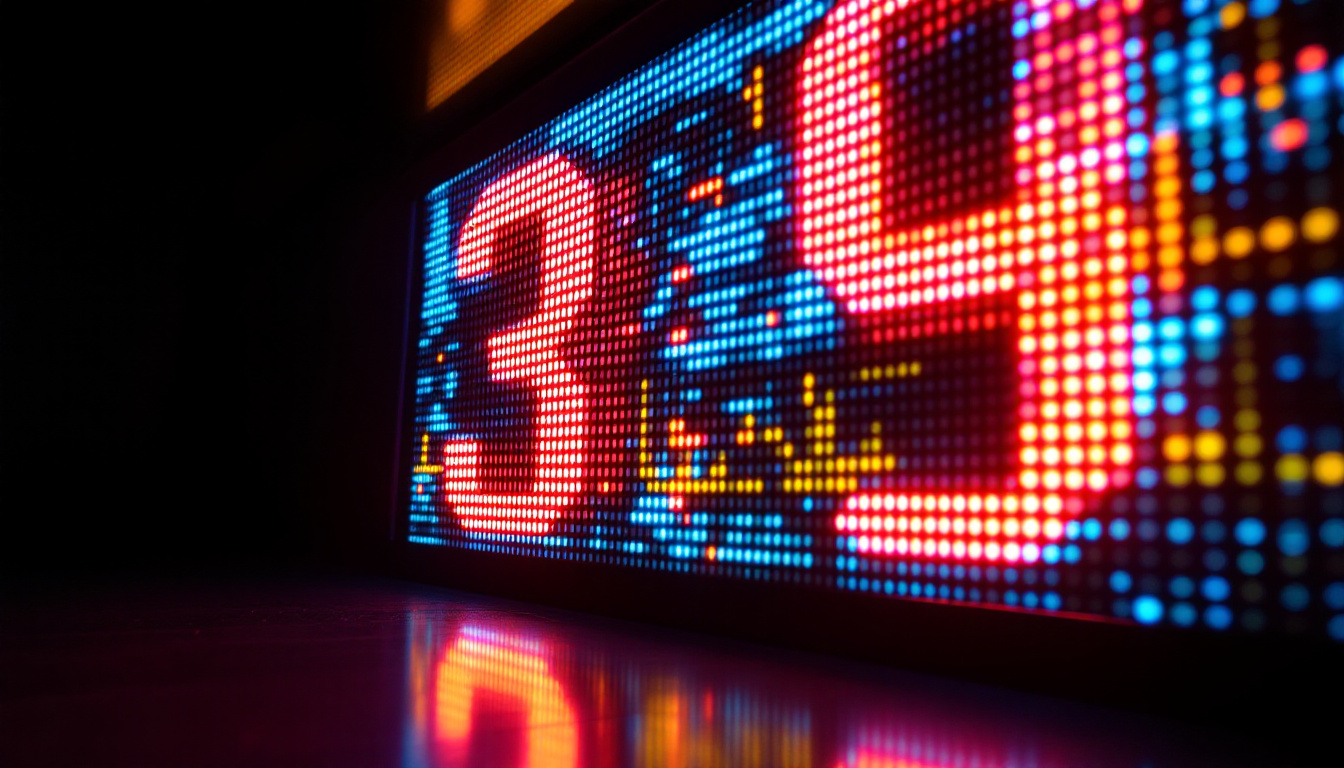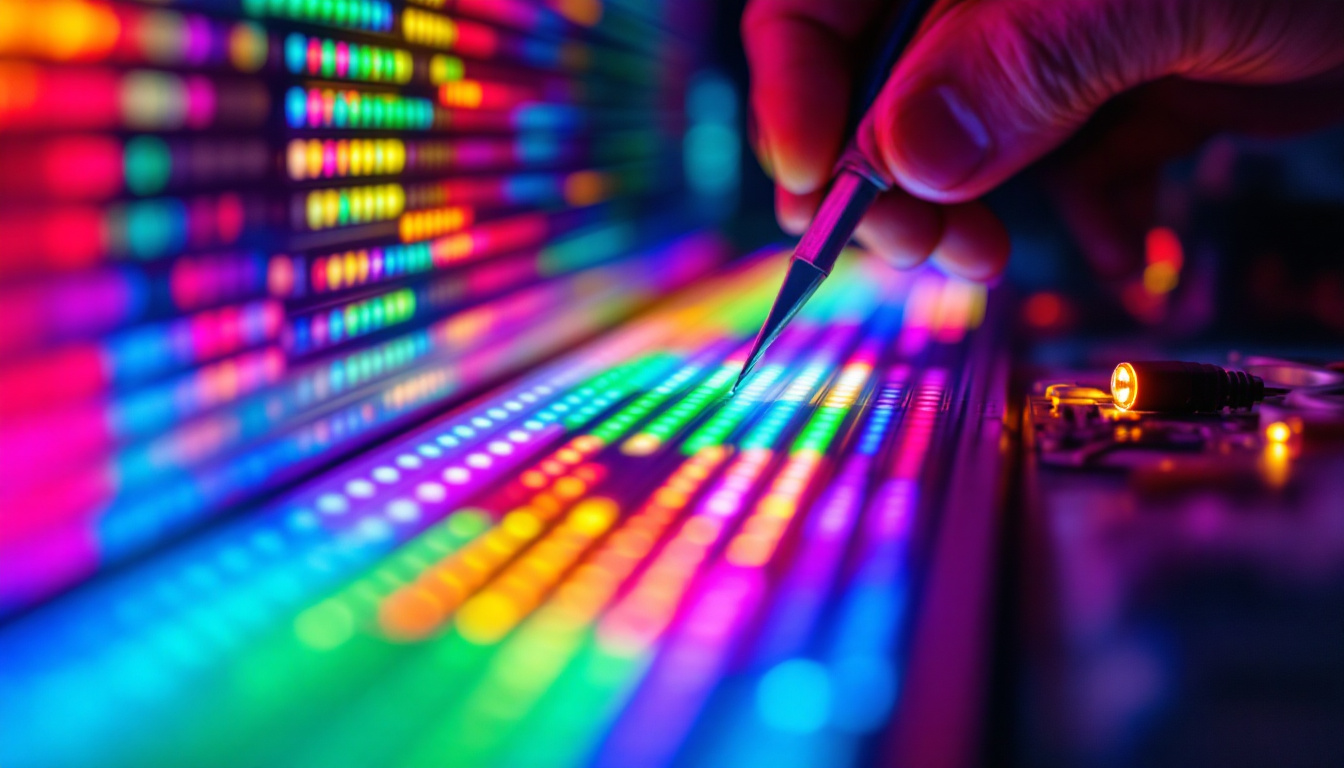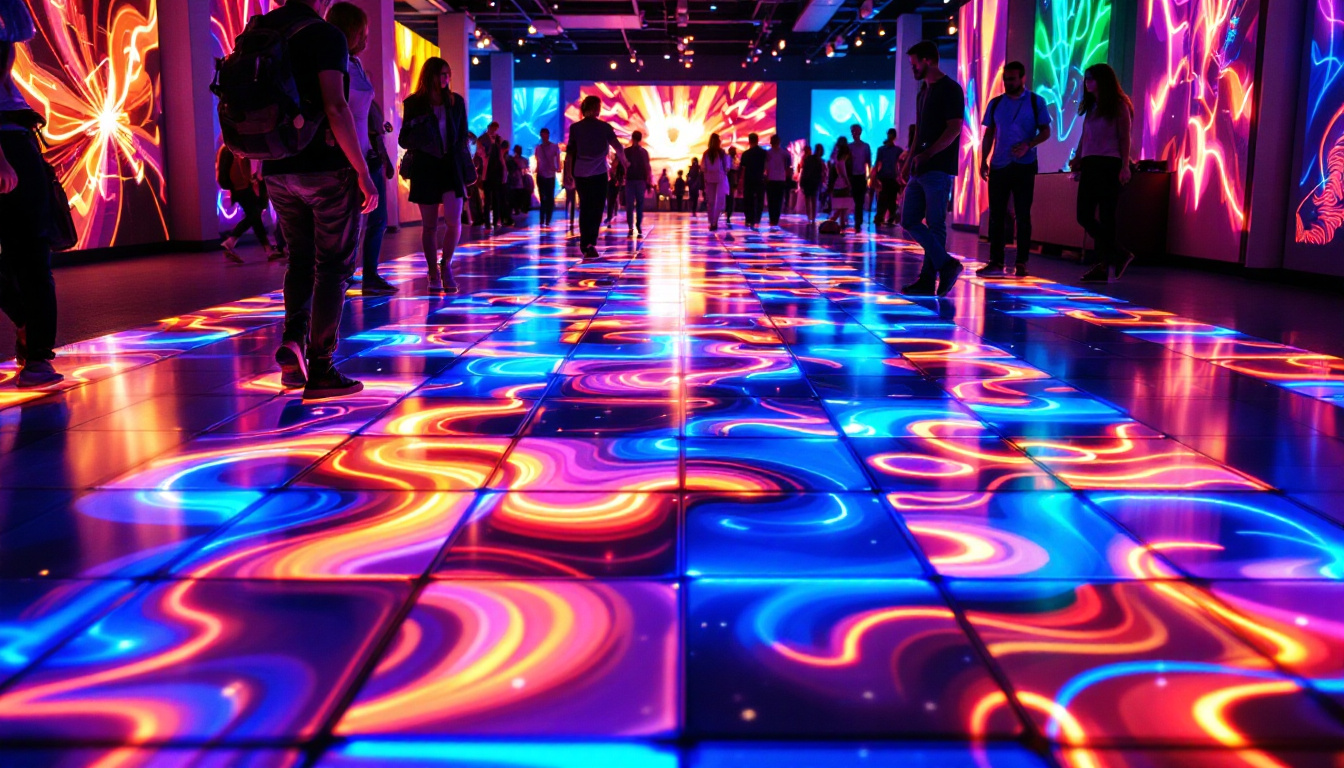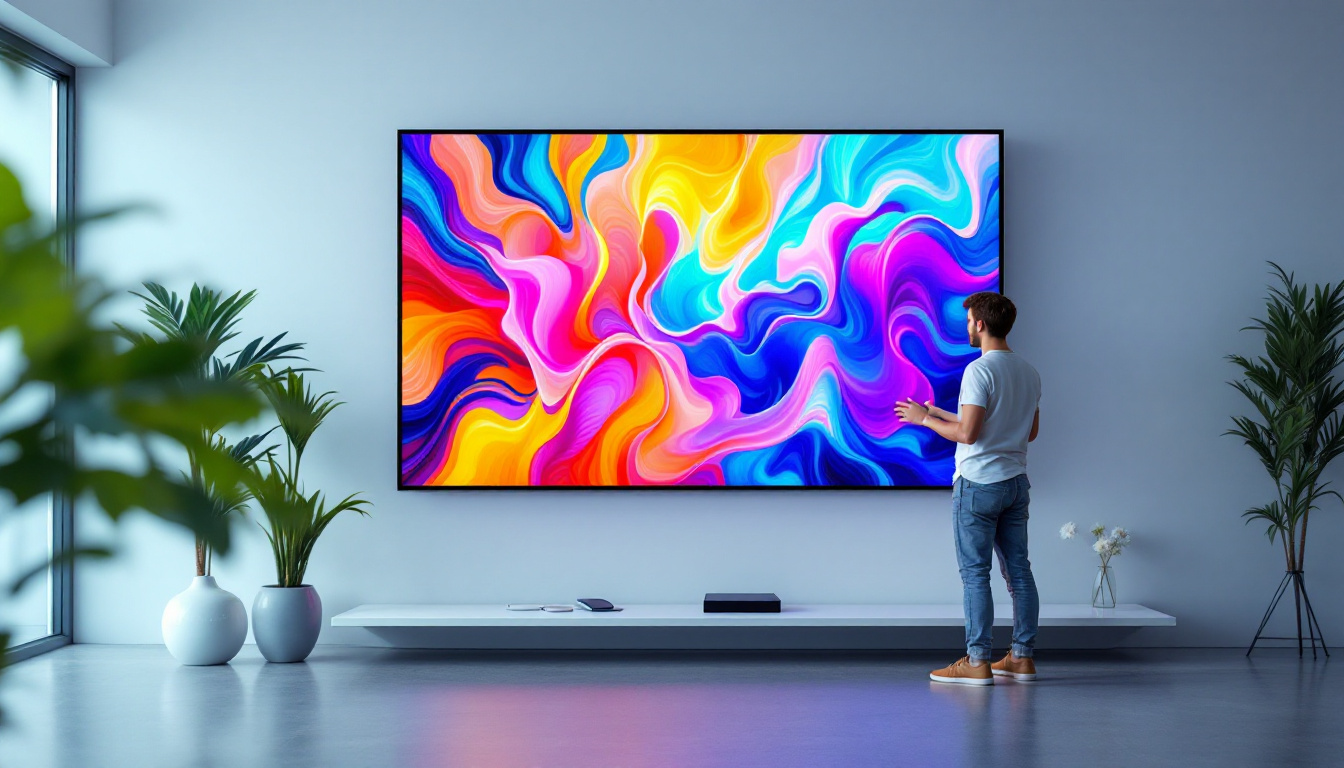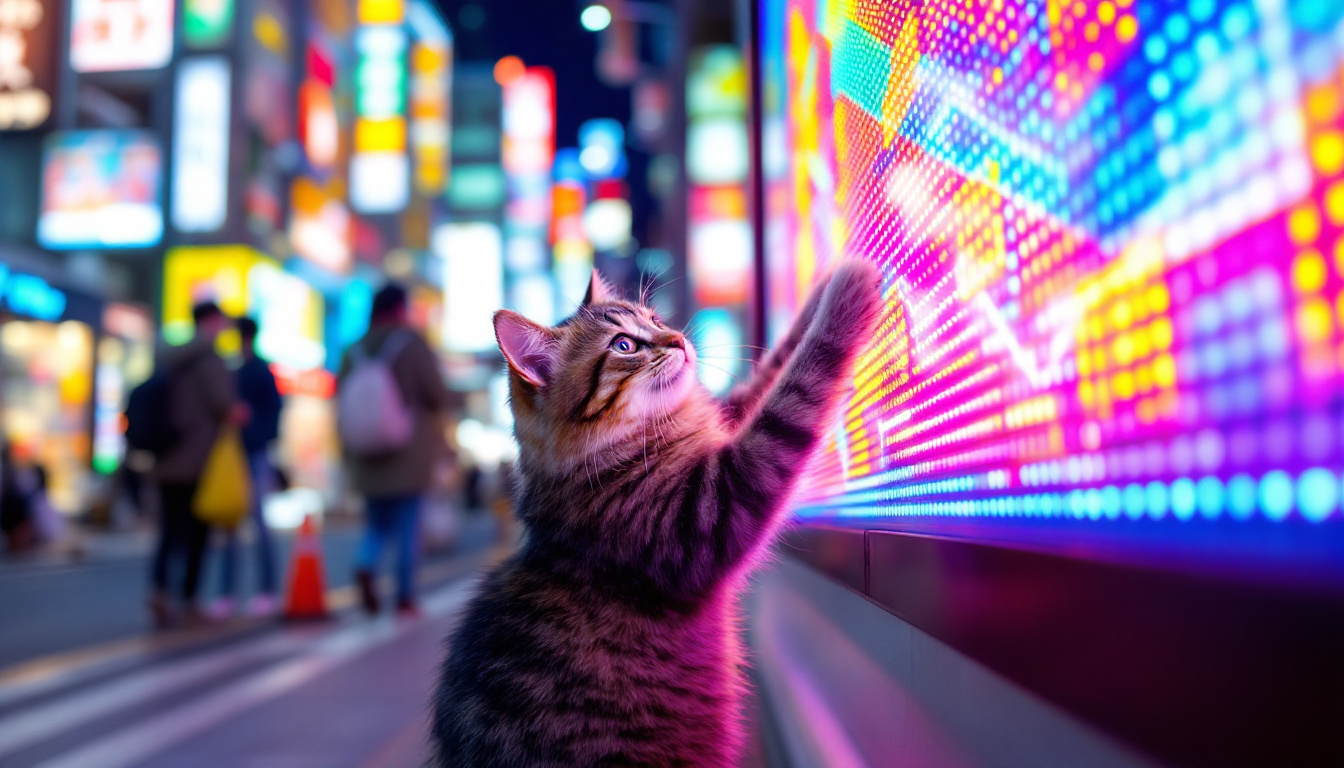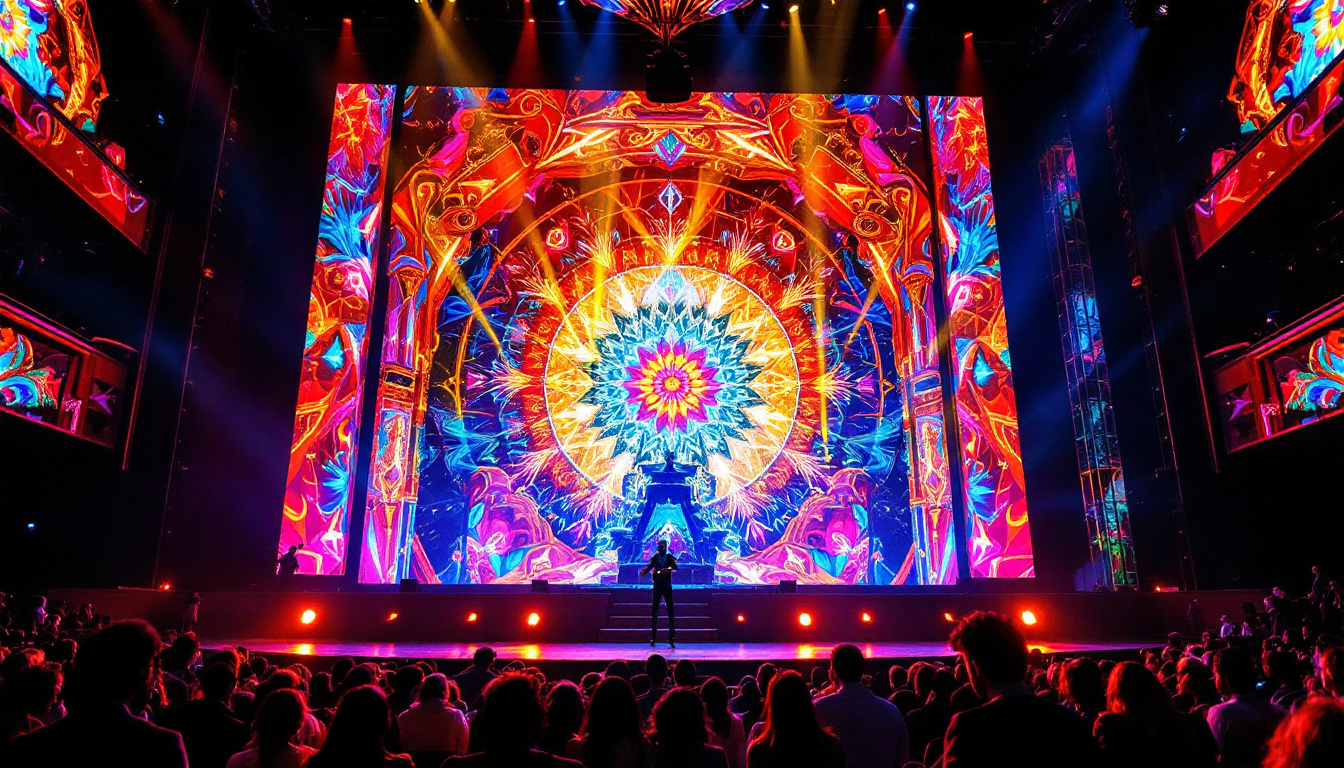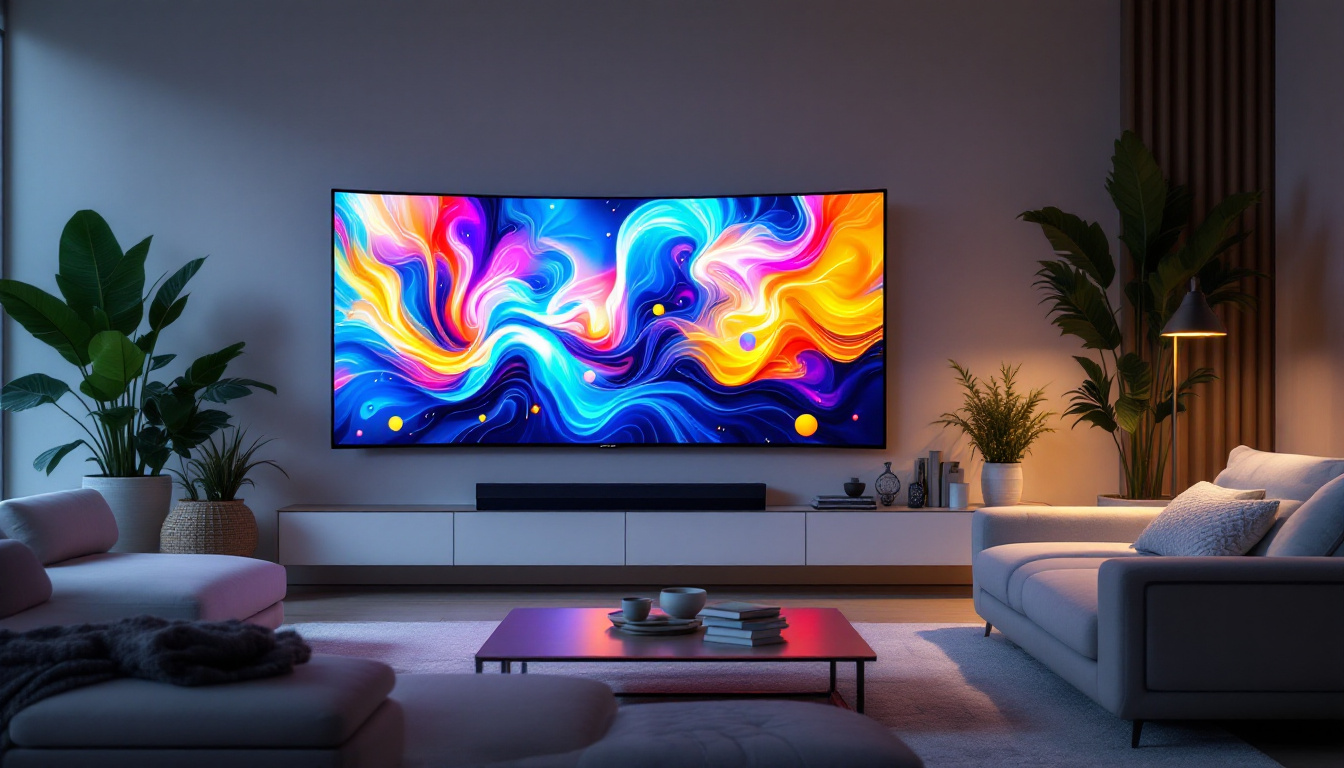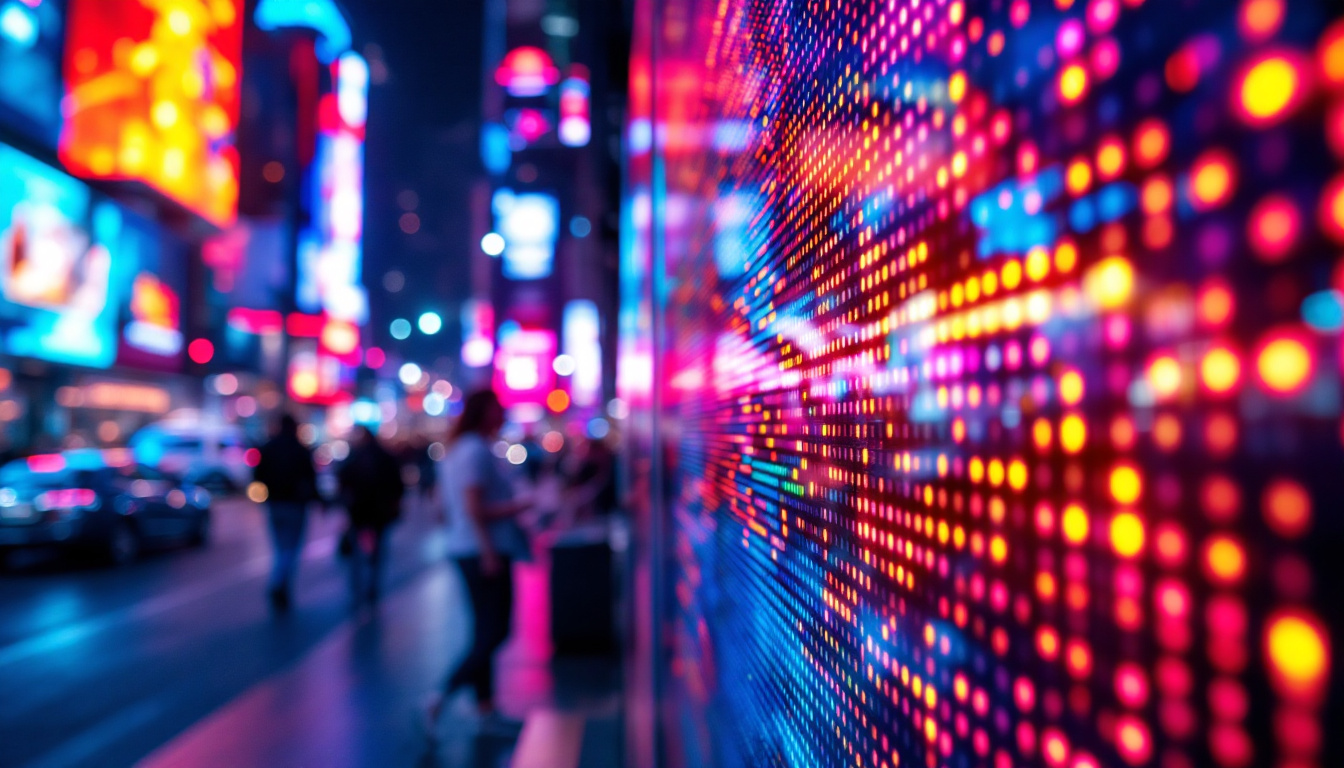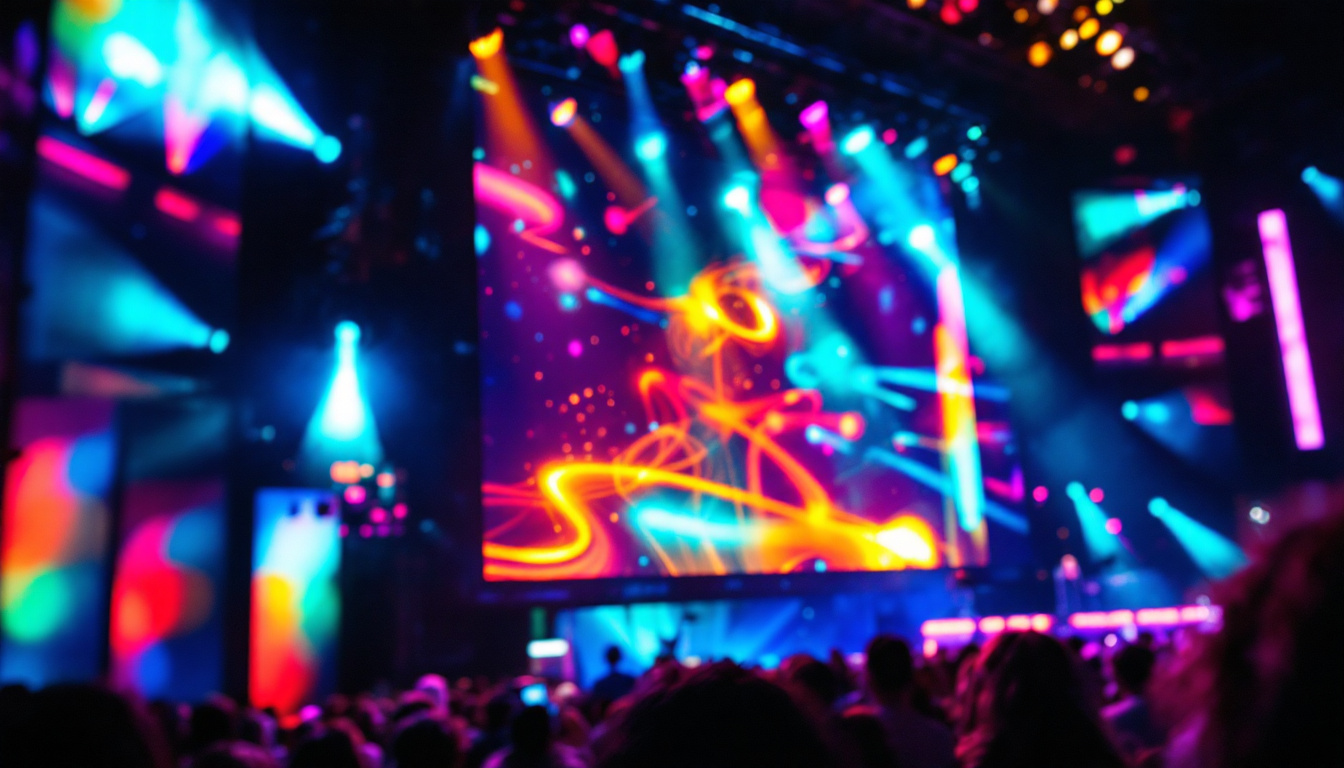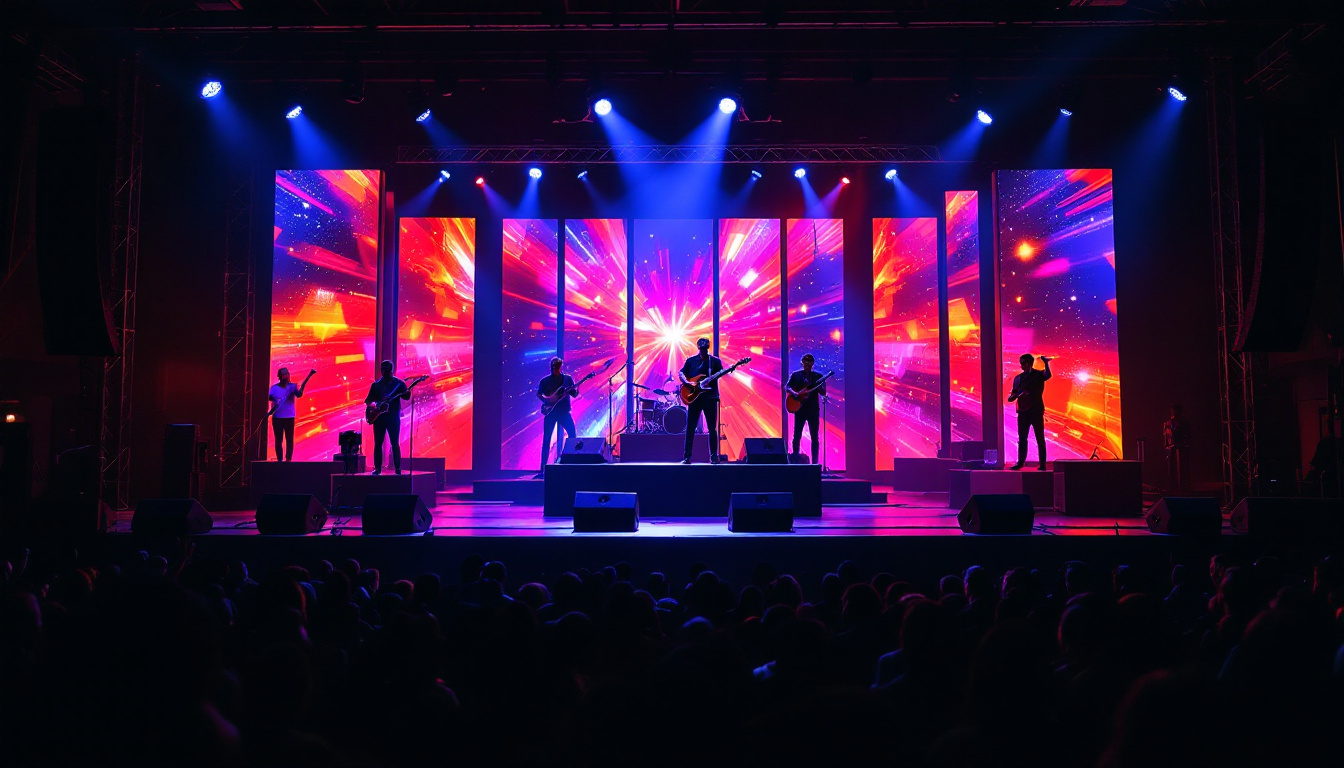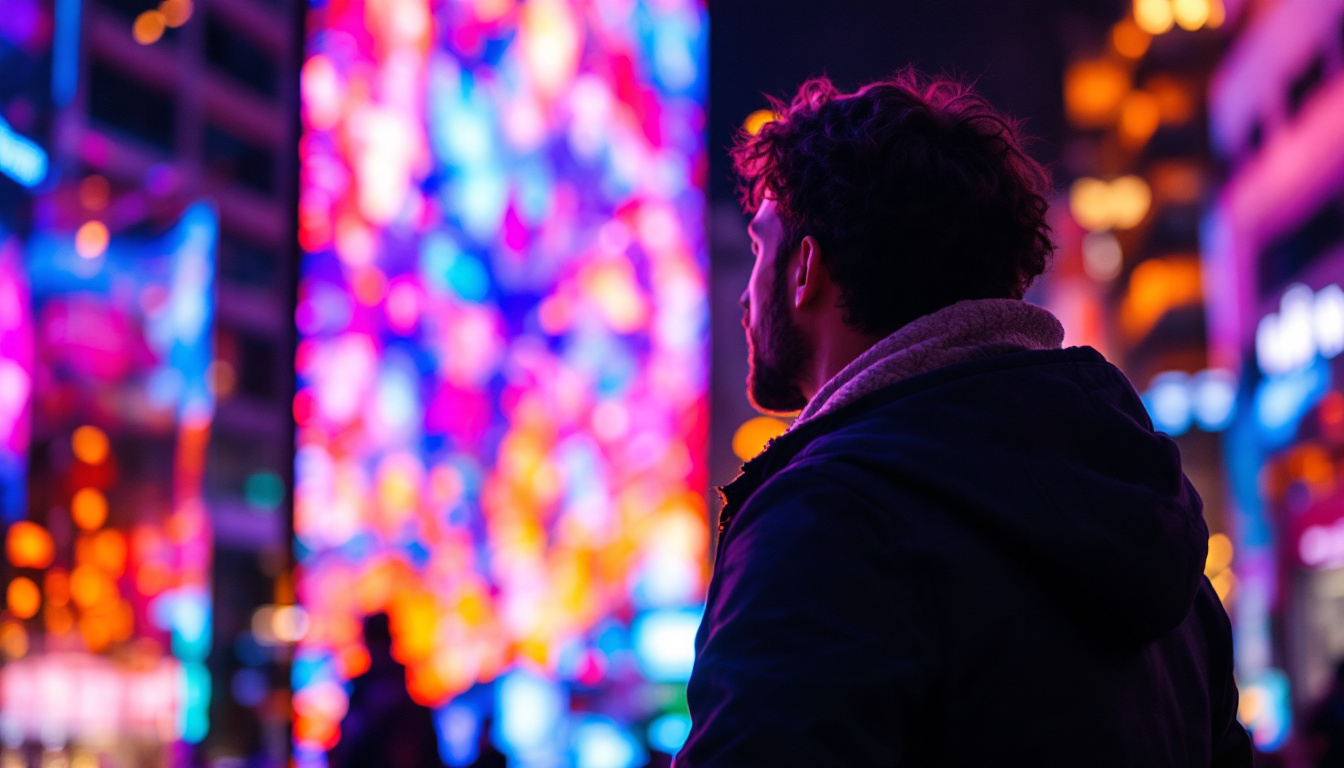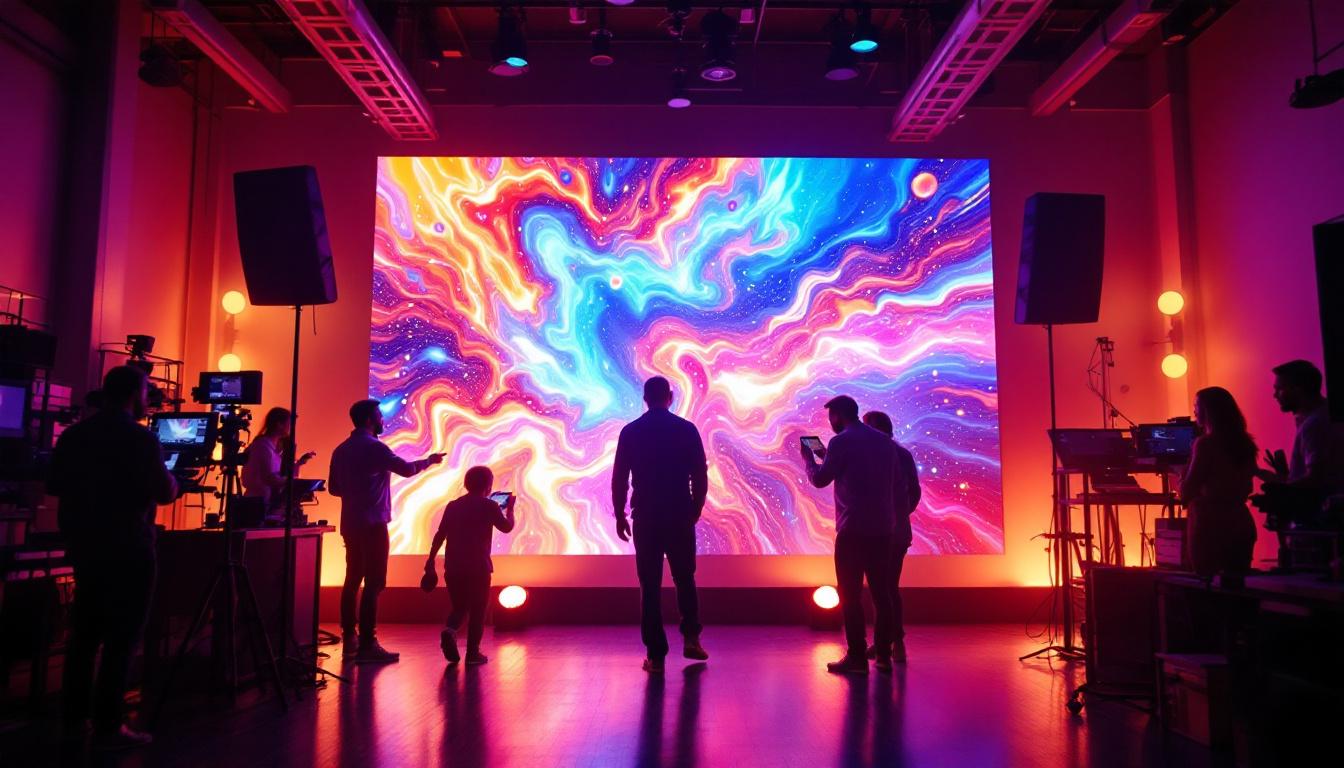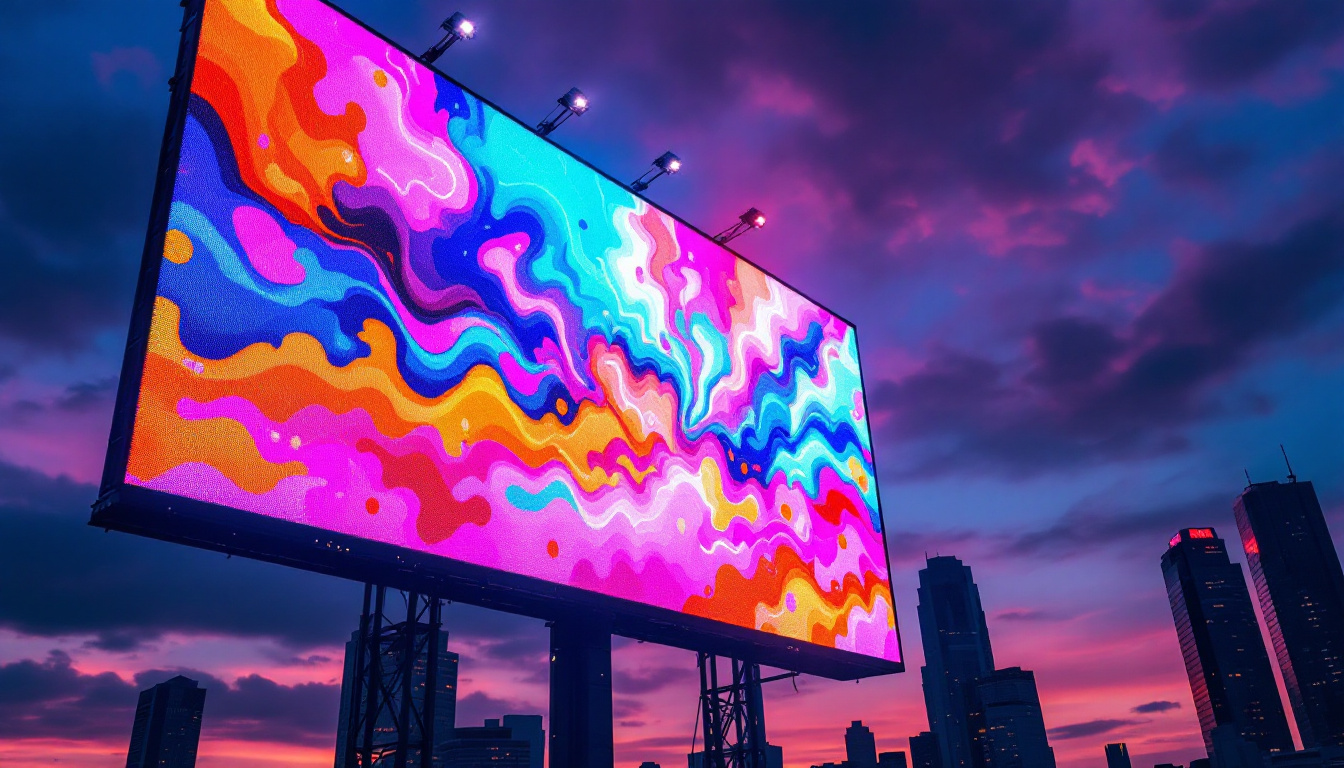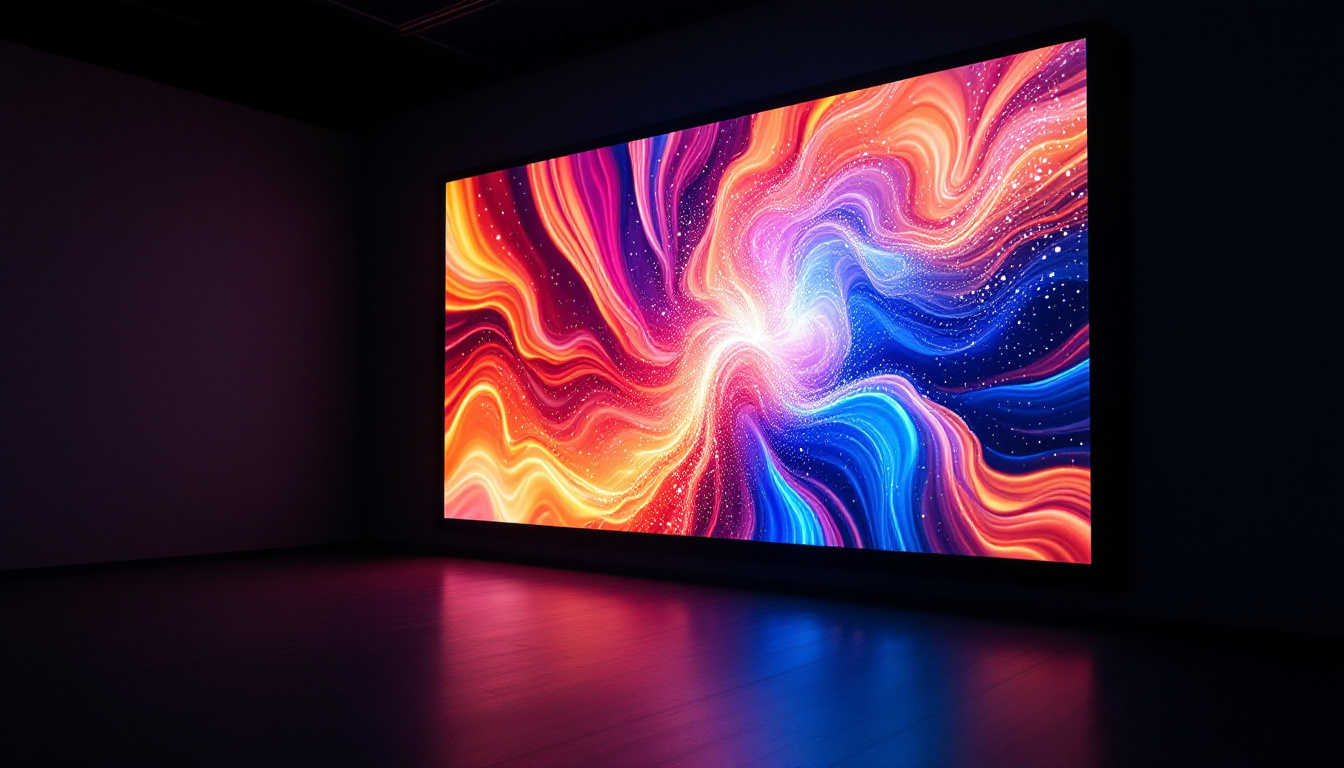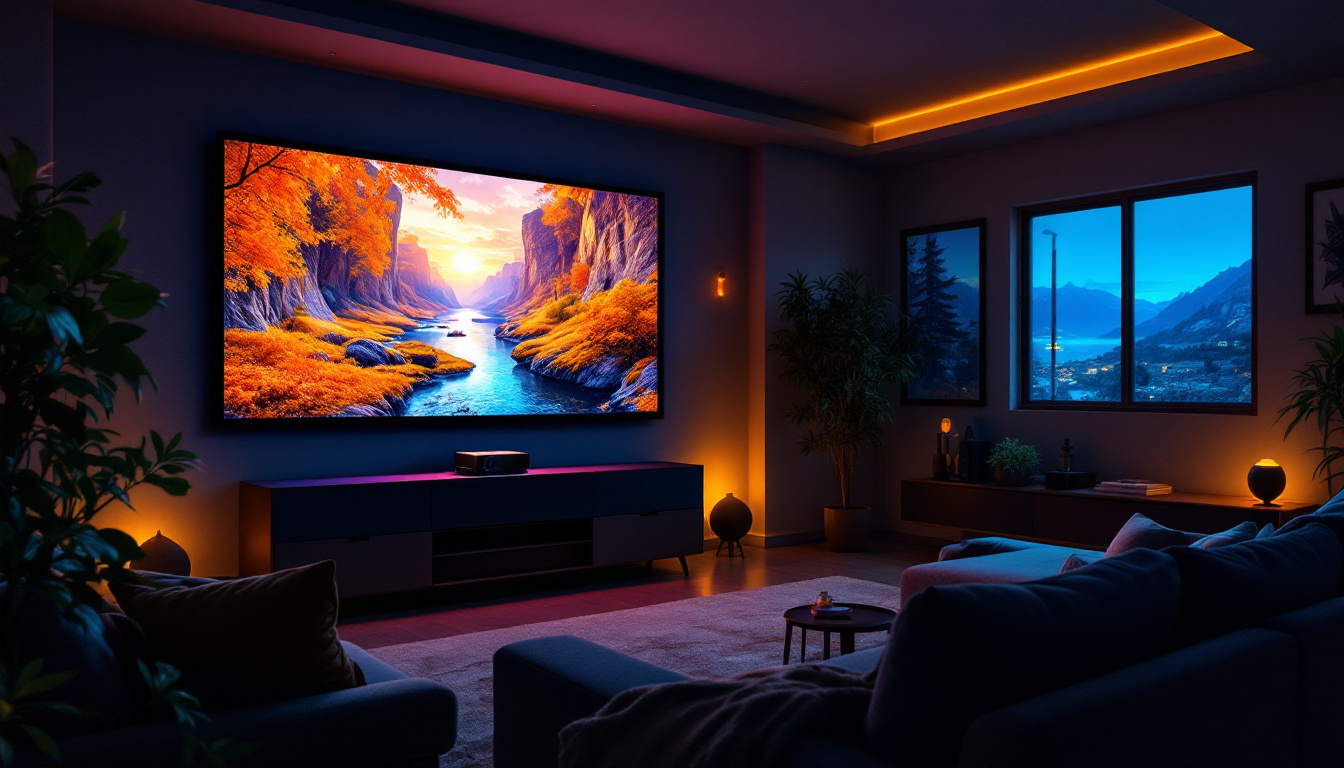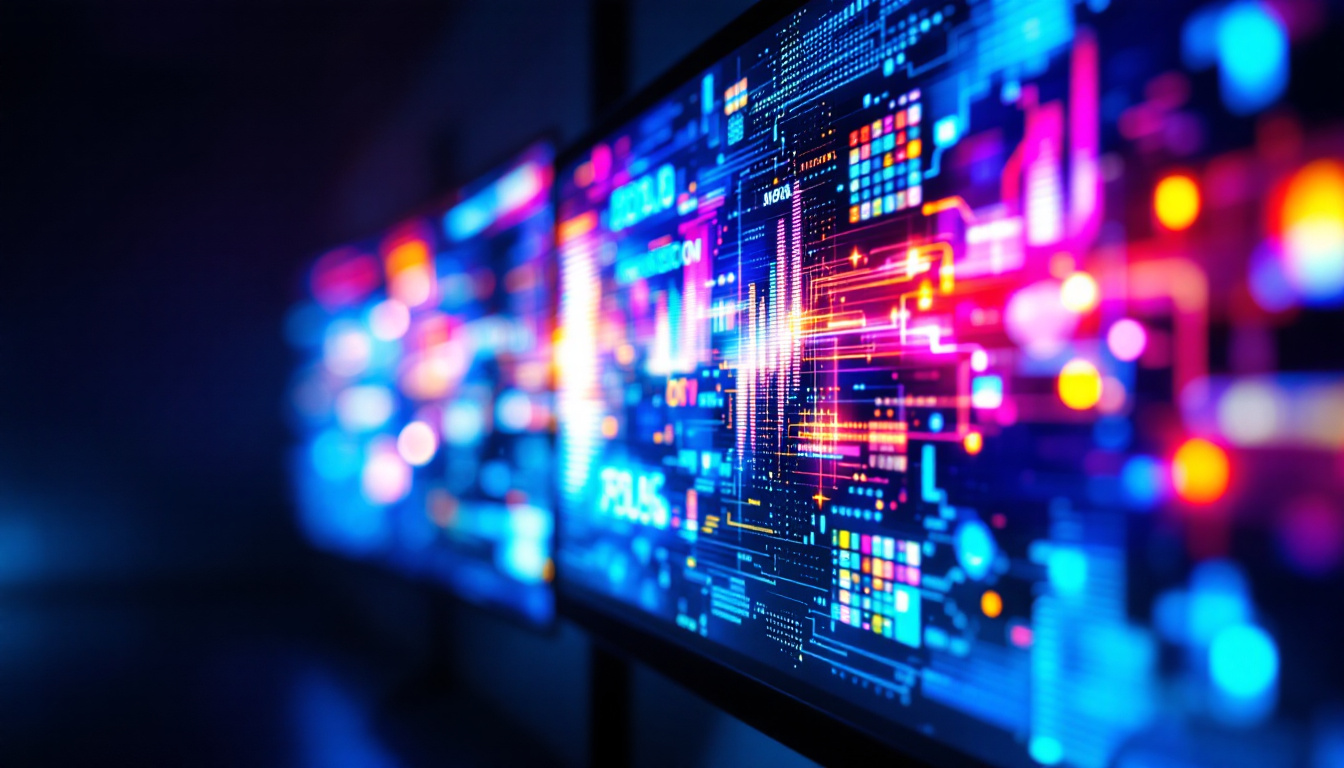In recent years, LED displays have become a ubiquitous part of modern life, found in everything from smartphones to large-scale billboards. Understanding how these displays work, their advantages, and their applications can provide valuable insights into their growing popularity. This article delves into the intricacies of LED technology, exploring its functionality, benefits, and the various contexts in which it is utilized.
What is an LED Display?
LED stands for Light Emitting Diode, a semiconductor device that emits light when an electric current passes through it. An LED display is made up of numerous tiny LED lights arranged in a grid. These lights can produce a wide spectrum of colors by combining red, green, and blue (RGB) LEDs. The ability to mix these colors allows for vibrant and dynamic images, making LED displays ideal for a variety of applications. From advertising to entertainment, LED displays have transformed how visual information is presented, captivating audiences with their brightness and clarity.
In addition to their visual appeal, LED displays are also known for their durability and longevity. Unlike traditional incandescent bulbs, which can burn out quickly, LEDs have a much longer lifespan, often lasting tens of thousands of hours. This longevity not only reduces the need for frequent replacements but also contributes to lower maintenance costs over time. Furthermore, LED technology is increasingly being recognized for its environmental benefits, as it consumes significantly less energy, thereby reducing the carbon footprint associated with lighting and display technologies.
Types of LED Displays
LED displays can be categorized into several types based on their configuration and application. The most common types include:
- Direct View LED Displays: These are typically used in large outdoor screens and digital billboards. They consist of individual LED modules that are directly visible to the viewer.
- LED Backlit Displays: Commonly found in televisions and computer monitors, these displays use LED lights to illuminate an LCD screen from behind, enhancing brightness and color accuracy.
- Organic LED (OLED) Displays: A newer technology that uses organic compounds to emit light, OLED displays offer superior contrast and color depth, making them popular in high-end televisions and smartphones.
Another emerging type of LED display is the MicroLED, which consists of microscopic LEDs that can be used to create high-resolution images with incredible detail and color accuracy. MicroLED technology promises to combine the best features of OLED and traditional LED displays, offering high brightness levels, deep blacks, and excellent energy efficiency. This innovation is particularly exciting for the future of large-scale displays and immersive environments, such as virtual reality and augmented reality applications.
How LED Displays Work
The operation of an LED display is based on the principles of electroluminescence. When an electric current flows through the semiconductor material in an LED, it excites the electrons, causing them to emit photons, or light particles. This process is highly efficient, allowing LED displays to produce bright images while consuming less power compared to traditional display technologies.
Each pixel in an LED display is composed of red, green, and blue sub-pixels. By varying the intensity of each sub-pixel, a wide range of colors can be achieved. For instance, when all three sub-pixels are lit at full intensity, the pixel appears white. Conversely, turning them off results in black, while different combinations produce various colors. This precise control over color and brightness is what makes LED displays so versatile, allowing them to be used in everything from simple indicators to complex video walls that can display high-definition content.
Moreover, LED displays are often equipped with advanced technology such as dynamic refresh rates and adaptive brightness, which enhance the viewing experience by ensuring that images remain sharp and vibrant in various lighting conditions. This adaptability makes them suitable for a range of environments, from dimly lit theaters to bright outdoor settings, where maintaining visibility and color fidelity is crucial. As technology continues to evolve, we can expect even more innovative features that will further enhance the capabilities of LED displays in the years to come.
Advantages of LED Displays
LED displays offer numerous advantages over traditional display technologies, making them a popular choice for both consumers and businesses. Some of the key benefits include:
Energy Efficiency
One of the most significant advantages of LED technology is its energy efficiency. LED displays consume considerably less power than traditional incandescent or fluorescent displays. This not only reduces electricity costs but also contributes to a lower carbon footprint, making LED displays an environmentally friendly option.
Longevity and Durability
LED displays have a longer lifespan compared to other display technologies. While traditional displays may last a few thousand hours, LED displays can operate for tens of thousands of hours with minimal degradation in quality. Additionally, they are more resistant to shock and vibration, making them suitable for outdoor environments and high-traffic areas.
High Brightness and Contrast
LED displays are known for their high brightness levels, which enable them to be viewed clearly even in direct sunlight. This makes them ideal for outdoor applications, such as advertising billboards and sports arenas. Furthermore, the contrast ratios of LED displays are superior, allowing for deeper blacks and more vibrant colors, enhancing the overall viewing experience.
Applications of LED Displays
The versatility of LED displays allows them to be used in a wide range of applications. From advertising to entertainment, their adaptability makes them a preferred choice across various industries.
Advertising and Marketing
One of the most prominent uses of LED displays is in advertising. digital billboards and signage leverage the bright, eye-catching nature of LED technology to attract consumers’ attention. Advertisers can easily change content, allowing for dynamic marketing campaigns that can be tailored to specific audiences or events.
Moreover, the ability to display video content and animations creates a more engaging experience for viewers, leading to increased brand visibility and customer interaction.
Entertainment and Events
In the entertainment industry, LED displays are used extensively in concerts, festivals, and sporting events. Large LED screens provide audiences with clear visuals from a distance, enhancing the overall experience. They can also be used for stage backdrops, creating immersive environments that captivate audiences.
Additionally, LED technology is employed in theaters and cinemas, where it can deliver vibrant images and deep colors, improving the quality of the viewing experience.
Transportation and Public Information
LED displays play a crucial role in transportation systems, providing real-time information to passengers. Train stations, airports, and bus terminals utilize LED screens to display arrival and departure times, flight information, and other essential announcements. The high visibility and clarity of LED displays ensure that information is easily accessible, contributing to efficient transportation systems.
Furthermore, in public spaces, LED displays are used for informational signage, emergency alerts, and wayfinding, helping to improve safety and navigation in crowded areas.
Challenges and Considerations
While LED displays offer numerous advantages, there are also challenges and considerations that must be taken into account when implementing this technology.
Initial Cost
The initial investment for LED displays can be higher than traditional display technologies. This cost includes not only the price of the display itself but also installation and maintenance expenses. However, it is essential to consider the long-term savings associated with energy efficiency and durability, which can offset the initial costs over time.
Heat Management
LED displays generate heat during operation, which can affect their performance and lifespan if not managed properly. Adequate cooling systems must be in place to prevent overheating, especially in large installations. This requirement can add to the complexity and cost of installation.
Color Calibration
Maintaining color accuracy across an LED display can be challenging, particularly in larger installations where individual modules may have slight variations in color output. Regular calibration is necessary to ensure uniformity and consistency in color representation, which can be a time-consuming process.
Future Trends in LED Display Technology
The LED display industry is continually evolving, with advancements in technology leading to exciting new possibilities. Some of the trends shaping the future of LED displays include:
MicroLED Technology
MicroLED technology represents a significant leap forward in display technology. Unlike traditional LEDs, MicroLEDs are much smaller, allowing for higher pixel densities and improved image quality. This technology enables the creation of ultra-thin, flexible displays that can be used in a variety of applications, from smartphones to large-scale video walls.
Integration with Smart Technology
As smart technology continues to permeate everyday life, LED displays are increasingly being integrated with IoT (Internet of Things) capabilities. This integration allows for real-time data display, remote management, and enhanced interactivity, creating a more dynamic user experience. For instance, smart signage can adapt content based on audience demographics or environmental conditions.
Enhanced Sustainability
With growing concerns about environmental impact, manufacturers are focusing on creating more sustainable LED displays. This includes using recyclable materials, reducing energy consumption, and improving the overall lifespan of products. As sustainability becomes a priority for consumers and businesses alike, eco-friendly LED displays are likely to gain traction in the market.
Conclusion
LED displays have revolutionized the way information is presented and consumed across various sectors. Their energy efficiency, longevity, and vibrant color capabilities make them an attractive choice for businesses and consumers. As technology continues to advance, the potential applications and benefits of LED displays are expected to expand, further solidifying their role in modern society.
Understanding the intricacies of LED technology and its applications can help individuals and organizations make informed decisions about integrating this technology into their operations. Whether for advertising, entertainment, or public information, LED displays are set to remain a pivotal component of visual communication in the digital age.
Discover LumenMatrix’s Innovative LED Solutions
Ready to elevate your visual communication with the latest in LED technology? Explore LumenMatrix’s comprehensive range of LED display solutions, designed to captivate your audience and amplify your message. From vibrant Indoor LED Wall Displays to dynamic Outdoor LED Wall Displays, and from versatile Vehicle LED Displays to engaging LED Sports Displays, LumenMatrix is at the forefront of creating immersive visual experiences. With a commitment to innovation and quality, LumenMatrix offers tailored solutions that meet your specific needs, including Custom LED Displays and All-in-One LED Display systems. Check out LumenMatrix LED Display Solutions today and see how we can transform your space into a beacon of engagement.

